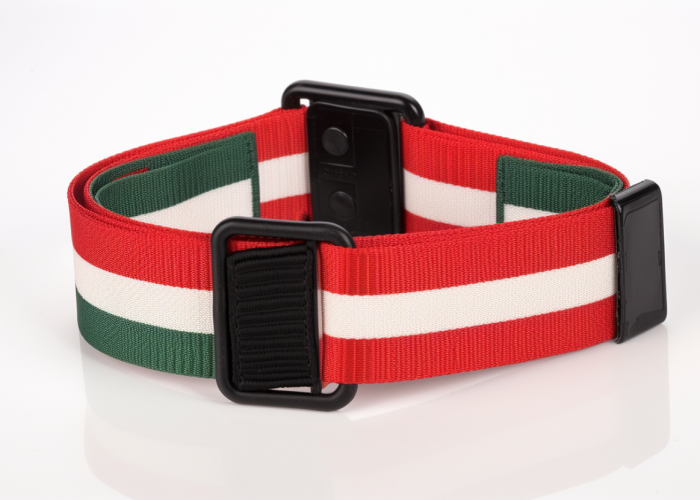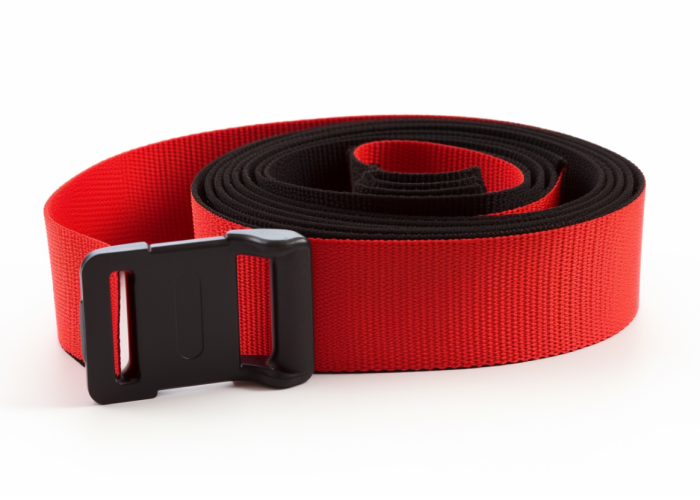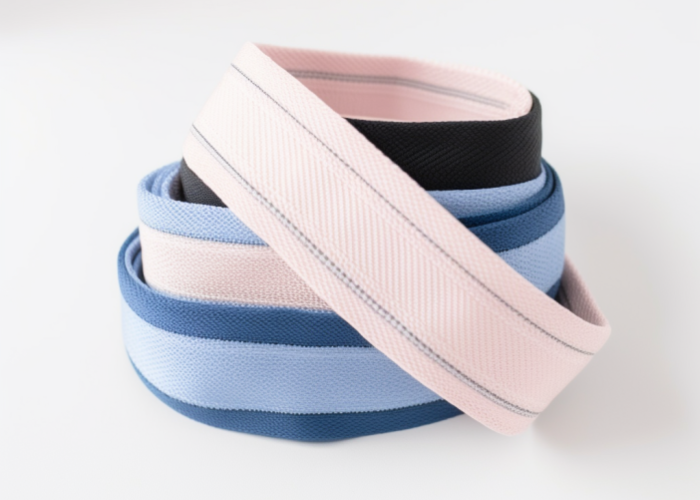Selecting webbing for medical tourniquets requires understanding specific performance characteristics crucial for emergency applications. These critical components must perform reliably under pressure while meeting strict medical standards. Our custom manufacturing capabilities enable product developers to achieve optimal material specifications for life-saving devices.
A tourniquet strap is a specialized medical device designed to control severe bleeding by applying strong pressure to a limb, temporarily stopping blood flow. These critical components use engineered webbing for rapid deployment, consistent pressure, and reliable performance in emergency medicine, trauma care, surgery, and field medical situations.
Explore key specs that make tourniquet webbing effective—from materials to coatings—to help you choose the best custom webbing for medical device applications.


Webbing manufacturing expert with 15+ years of experience helping product developers build high-performance straps for industrial, medical, and outdoor use.
The primary purpose of a tourniquet strap is to stop arterial blood flow during life-threatening bleeding events. This critical medical component serves as a last-resort intervention when direct pressure alone cannot control severe hemorrhage from limb injuries.
Key purposes of tourniquet straps:
In emergency scenarios, tourniquets save lives by completely occluding blood vessels to prevent exsanguination. Medical studies show rapid application in severe injuries can increase survival rates by up to 90% when implemented quickly.
For transport situations, tourniquets maintain hemorrhage control during patient movement between care facilities or from field to hospital. The webbing must maintain consistent tension throughout transport to prevent additional blood loss.
In medical settings, specialized tourniquets temporarily engorge veins for procedures like venipuncture and IV placement. These applications require materials with precise elasticity—providing adequate venous occlusion without completely blocking arterial flow.
The effectiveness of any tourniquet depends directly on its webbing properties—specifically its ability to maintain tension, resist slippage, and withstand tightening forces without failure.
A tourniquet strap works by creating circumferential pressure around a limb sufficient to occlude blood vessels beneath it. The webbing component is essential to this function, serving as both the compression mechanism and the secure anchoring system.
Key operational principles:
When applied correctly, the strap is wrapped tightly around the limb above the site of bleeding. The mechanical advantage system (often a windlass or ratchet) then increases tension in the webbing until arterial blood flow stops. This compression must be sufficient to overcome systolic blood pressure, typically requiring 200-250 mmHg pressure on the limb.
The effectiveness depends directly on the webbing’s ability to maintain tension without stretching or slipping. Unlike elastic tourniquets that can lose tension over time, high-performance webbing materials provide consistent pressure—critical in emergencies where even momentary pressure loss could restart hemorrhaging.
Specialized webbing designs incorporate features that prevent the tourniquet from loosening once applied, ensuring continuous pressure maintenance until intentionally released by medical professionals.

The optimal materials for tourniquet straps are high-strength, low-stretch synthetic webbings—primarily high-tenacity polyester and nylon with specialized weaving patterns. These materials provide the critical balance of strength, minimal elongation, and durability required for emergency applications.
Key material and construction features:
Emergency and combat tourniquets typically use wide (1.5-2 inch) polyester webbing due to its minimal stretch under load and high breaking strength. The low elongation is crucial—excessive stretch could allow resumed blood flow despite apparent tightness, while too little flexibility makes application difficult.
Weaving methods significantly impact tourniquet effectiveness. Plain or twill weaves provide optimal strength-to-weight ratio and minimal stretch. Reinforced edges prevent fraying during rapid deployment and ensure the webbing maintains structural integrity during high-tension applications.
For medical-specific applications, tourniquets often utilize hypoallergenic materials. Many are specifically labeled as “not made with natural rubber latex” to avoid allergic reactions in emergency situations where patient history may be unknown.
Standard tourniquet straps vary by application, but most effective medical tourniquets use webbing with a width of about 1.5 inches (approximately 40mm) and length of 38 inches for adults. These dimensions provide optimal pressure distribution and versatility across different patient sizes.
Key dimensional specifications:
Width is perhaps the most critical dimension, as it directly impacts pressure distribution. Narrower webbing (<1 inch) creates dangerous focal pressure that can damage underlying tissues, while excessively wide webbing (>2 inches) may not generate sufficient pressure to occlude arteries.
Length requirements vary based on application and patient demographics. Combat and emergency tourniquets typically feature around 38 inches of webbing to accommodate larger limbs and allow for the mechanical advantage system. Pediatric designs must accommodate smaller dimensions while maintaining equal pressure capabilities.
Industrial manufacturers produce these webbings within precise dimensional tolerances to ensure consistent performance across production batches—critical for medical device applications where reliability is essential.

Surface treatments for tourniquet webbing include textured or patterned surfaces, rubberized coatings, and anti-slip treatments designed to enhance grip and prevent migration during use. These specialized finishes are critical for maintaining proper positioning under tension.
Key surface enhancement technologies:
Grip-enhancing treatments provide a fundamental safety feature for tourniquets. These treatments create increased friction between the webbing and skin or clothing, ensuring the tourniquet stays securely in place during patient transport or movement. Textured surfaces also minimize the need for excessive overtightening to compensate for slippage.
Rubberized coatings or treatments offer dual benefits: improved grip and weather resistance. These treatments help maintain consistent performance in challenging environments where blood, sweat, or environmental moisture could otherwise compromise effectiveness.
Advanced temperature-resistant formulations ensure tourniquet webbing performs consistently across extreme temperature ranges from -40°F to 200°F—critical for military and emergency services applications in diverse environments.
Tourniquet webbing applications vary across industries, with medical, military, emergency services, and training sectors each requiring specialized performance characteristics. Manufacturing specifications must address the unique demands of each application environment.
Key industry applications:
Medical applications require tourniquet webbing that meets stringent biocompatibility standards, resists common disinfectants, and provides consistent performance in controlled settings. These applications typically emphasize ease of application and minimal risk of tissue damage.
Military specifications prioritize durability, environmental resistance, and consistent performance in austere conditions. Military-grade tourniquets must withstand extreme temperatures, moisture, UV exposure, and rough handling while maintaining reliable operation under stress.
Emergency services require a balance of durability and ease of use. Their applications typically focus on rapid deployment features and clear visual indicators for proper application—often utilizing high-visibility webbing colors and instructional markings.
Training applications use specialized webbing formulations that mimic the mechanical properties of field tourniquets but may incorporate additional features like pressure indicators or reusable fastening systems for repeated educational use.
Customization options for tourniquet webbing include specialized material blends, surface treatments, color-coding, and integrated features designed for specific application requirements. These custom manufacturing capabilities enable medical device developers to optimize performance for their specific use case.
Key customization capabilities:
Material composition can be precisely engineered to achieve specific elongation characteristics—critical for applications requiring exact pressure levels. By adjusting fiber types, weave density, and finishing processes, manufacturers can create webbing with performance properties tailored to specific medical requirements.
Surface treatments can be combined and customized to balance grip, durability, and cleaning requirements. For example, medical-specific applications might incorporate antimicrobial properties with easy-clean surfaces, while military applications might prioritize environmental resistance.
Color-coding and printed markings offer significant functional advantages, particularly for training purposes or applications requiring rapid identification. Custom webbings can incorporate instructional elements directly into the material, reducing application errors in emergency situations.
Custom dimensions beyond standard sizes allow for specialized applications like pediatric devices or extremity-specific tourniquets, ensuring proper fit and function across different patient demographics and anatomical requirements.
Tourniquet webbing represents a critical component where material engineering directly impacts life-saving performance. Understanding these technical requirements helps medical device manufacturers select appropriate materials for specific applications. Our custom webbing manufacturing capabilities enable precise specifications in materials, treatments, and dimensions—delivering tourniquet straps optimized for your exact medical device requirements.
Tourniquet webbing must comply with ISO 10993 biocompatibility standards, FDA medical device requirements, and military specifications for tactical applications. These standards ensure materials are non-toxic, non-sensitizing, and maintain performance integrity throughout their service life while meeting strict regulatory requirements for medical devices.
Weaving patterns directly influence critical tourniquet functions including stretch resistance, edge stability, and tension consistency. Plain weaves offer minimal stretch for consistent pressure, twill weaves provide higher breaking strength, and specialized herringbone patterns deliver optimal edge stability to prevent rolling during high-tension applications.
Textured patterns, silicone coatings, and rubberized finishes significantly improve tourniquet grip performance. These treatments increase the friction coefficient between webbing and application surfaces, preventing dangerous slippage during critical use while maintaining necessary tension for effective hemorrhage control.
Yes, fluoropolymer and polyurethane coatings substantially enhance tourniquet strap durability. These specialized treatments provide resistance to abrasion, chemicals, UV degradation, and repeated cleaning—extending service life while maintaining consistent performance in demanding medical and tactical environments.
Material selection directly impacts environmental performance through temperature stability, moisture resistance, and UV durability. High-tenacity polyester maintains consistent tension in extreme temperatures (-40°F to 200°F), while specialized nylon blends offer superior flexibility in cold conditions but may require additional treatments for moisture resistance.
Key cost factors include raw material grade, specialized treatments, quality testing requirements, and production volume. While premium materials increase unit costs, they significantly reduce failure risks in critical applications. Custom manufacturing typically represents 5-15% of finished medical device costs, offering excellent value for essential performance characteristics.